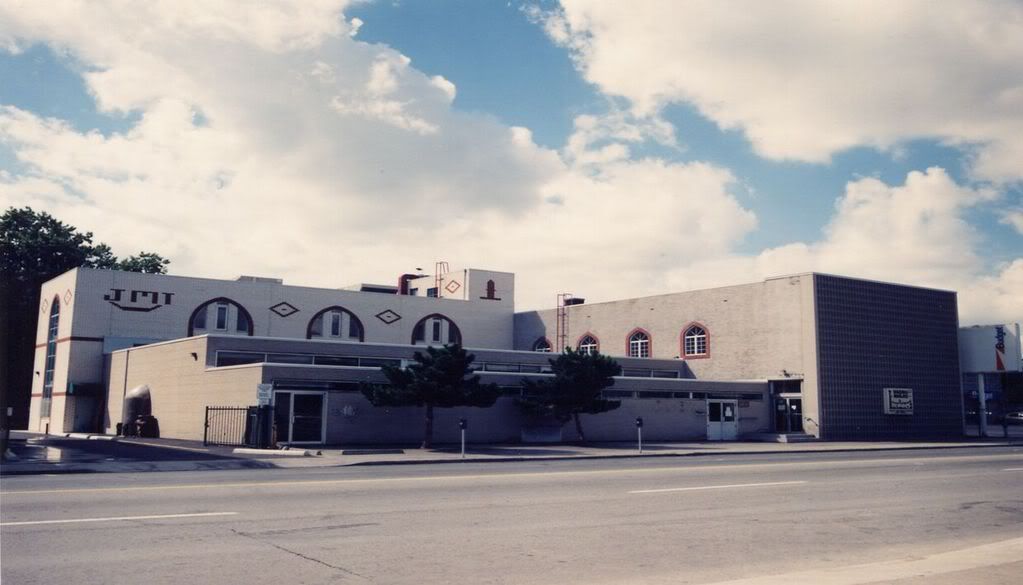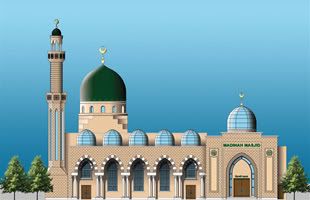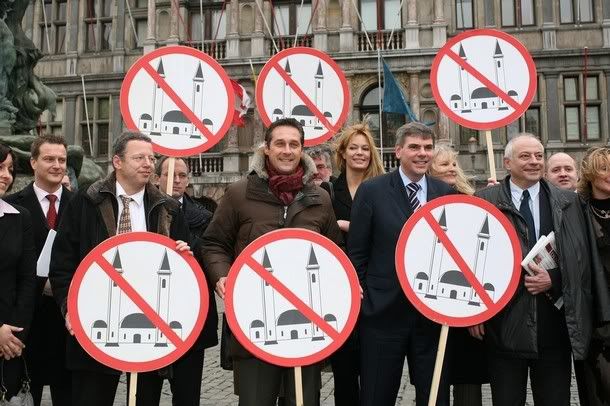 |  |
I had previously blogged about a new, non-camouflaged mosque soon to be completed in the downtown Toronto skyline.
Zak Ghanim, the architect, who is fittingly an Egyptian immigrant, is disclosing some design and architectural plans he has for this new mosque. He has been asked by the President of Madina Mosque (as this mosque is called) to emphasize the traditional elements in order for it to have " a 'real' mosque look" which incorporates "classical minaret, domes, geometric detailing and elaborate columns."
This is a far cry from corner "Islamic centers" (euphemisms for mosques) and mosques attached to strip-malls , when it seemed that the Muslim community wanted to hide its presence from the city's inhabitants. The same was true of the original Madina Mosque, which was really a nondescript building in an unattractive part of the Danforth.
Even Ghanim makes this observation by saying, "The first mosques in the city were not very elaborate, so we could build each part quickly. Now, it seems, each mosque is fancier than the next."
Now that Muslims have acquired a new-found confidence, they are not afraid to publicize their presence at all, as is evident by their new plans for the Madina Mosque, which has all the traditional paraphernalia of minarets and domes. The only things that appear to be missing from the Madina Mosque are the loudspeakers and recording devices for the multiple calls to prayer. But, we have to wait and see for that one.
Ghanim is already making plans for another city's mosque. This time, he would like to put more modern and avant-garde elements into it. He says that his modern vision for the mosque in Kitchener, Ontario, would be,"an original Canadian contribution to Islamic architecture."
This is how far we have come in Canadian architecture. Islamic architects can now talk about their "contributions". Unlike the exotic architecture of Moorish influences and revivals of past centuries, we are not talking about short, concentrated architectural influences which didn't change the cultures of the countries where they were erected. In fact, these buildings blended into the prevailing architecture, for all their foreignness.
What we're seeing, when Ghanim says "an original Canadian contribution to Islamic architecture", is buildings that are distinguishable and foreign from distances away. More importantly, the purpose of these buildings is not as attractive, even beautiful, exotica, but as functioning buildings that cater to cultures and religions which have no bearing on the predominant and historical culture of the cities and towns in which they are built.
In short, their purpose is to allow Muslim populations to unabashedly follow their own cultural and religious traditions in buildings that resemble - from function to design - those (traditional ones) that they left behind in their Muslim lands.
Thus, we have come from hidden Islamic "centers" to unequivocally traditional mosques, within a matter of a few years.
Muslims in Canada are no longer afraid to build fancy, traditional mosques. Which also means that they will not be afraid to publicly use them either.









